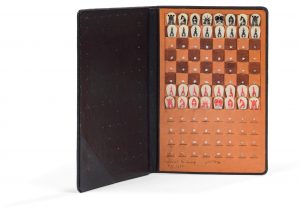Masters on the Market: Georges Braque
Dane Fine Art Brings Works by the First Cubist in November Sale
Before Cubism had a name, a following, or Pablo Picasso, it was associated with a French painter named Georges Braque. In 1908, several radical new paintings by the artist had just been rejected by the Salon d’Automne. Responding to the splintered, geometric style of the rejected works, art critic Louis Vauxcelles described Braque’s reduction of forms as “a painting made of little cubes.” That simple comment put a name to one of the best-recognized artistic movements of the 20th century.
Several paintings and sketches by Braque will come to auction with Dane Fine Art this fall. Live bidding will start at 12:00 PM EST on November 5th, 2020. Before placing a bid, discover more about Georges Braque and his contributions to Cubism.

Braque was born near Paris and grew up in Le Havre. He was raised to be a house painter, following his father and grandfather. By his early 20s, however, Braque was hooked on fine art and connected with some of the era’s leading Fauvist painters. His works from this period bear traces of Impressionism and the color palette of Henri Matisse. Gradually, though, the artist began to drift toward muted colors, broken forms, and geometric shapes. A burgeoning friendship with fellow young artist Pablo Picasso sealed Braque’s commitment to the new style.
Picasso and Braque regularly built upon each other’s work during this period. The former’s Les Demoiselles d’Avignon (1907) is often hailed as the first Cubist painting, but the style grew from the pair’s artistic collaborations. Many of Braque’s now-iconic still-life paintings were created during these early stages of the Cubist movement. Some employed techniques that were considered radical in their time, including the use of sawdust, wallpaper, and papier collé, are a gesture back to his house painting days.
Like many artists, Braque’s career was interrupted at various points by the events of the early 1900s. The friendship with Picasso gradually collapsed after Braque returned from World War I and began a quiet departure from the rigidity of Cubism. He was known to put paintings on hold for as long as it took to finish them, sometimes for decades. These hybrid paintings were started in one style and completed in another, reflecting Braque’s gradual Modernist evolution. They also spoke to his dedication to his work. In the eyes of American artist Man Ray, Braque was “a very gentle and kind man, completely obsessed by his paintings.”

By the 1950s, Braque had enjoyed a long and comfortable career in Picasso’s shadow. He flew under the art world’s radar for many years as other movements entered the public consciousness. Near the end of his life, Braque began engaging with subjects such as billiard tables and birds with a studious repetition, not unlike Vincent van Gogh’s Sunflowers series.
An aquatint piece from this period, titled Les deux Oiseaux or The Two Birds, will be offered in the upcoming sale with an estimate of USD 15,500 to $21,500. This etching is a strong example of Braque’s bird paintings, which often featured the dark outlines of nearly-abstract fowl against a blue and white background. Historically, the birds have enjoyed popularity on the auction block. A 1960 ceramic with the figure sold for EUR 62,500 (USD 81,500) at Sotheby’s, more than ten times higher than the upper estimate of EUR 6,000 (USD 7,800).

The Braque paintings that best perform at auction are the Cubist ones. Le guéridon, sold by Christie’s for USD 10,103,500 in 2017, is among the artist’s most abstract compositions. A close examination will show tubes of oil paint and other art materials scattered throughout the piece. Braque here hoped to create a type of self-portrait that would carry an independent essence. A sketch for a similar painting achieved GBP 35,000 (USD 45,600) at Phillips in 2015.
Though Braque did not receive the recognition he was due until the 1960s, he holds a key place in the history of Modern art. His works set the stage for dozens of better-known artists and are still considered the earliest applications of Cubism. Despite his comparative lack of public recognition, many of Braque’s collectors and admirers remain loyal. In the words of Amédée Ozenfant, a fellow French Cubist: “After him, who?”
Dane Fine Art’s Modern & Contemporary Art Sale will begin at 12:00 PM EST on November 5th, 2020. Find the auction details and complete catalog on LiveAuctioneers.










